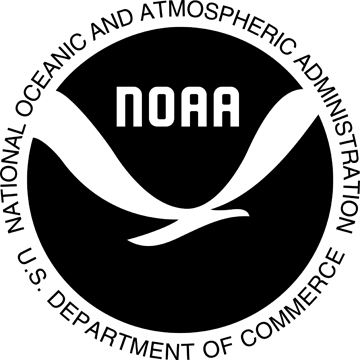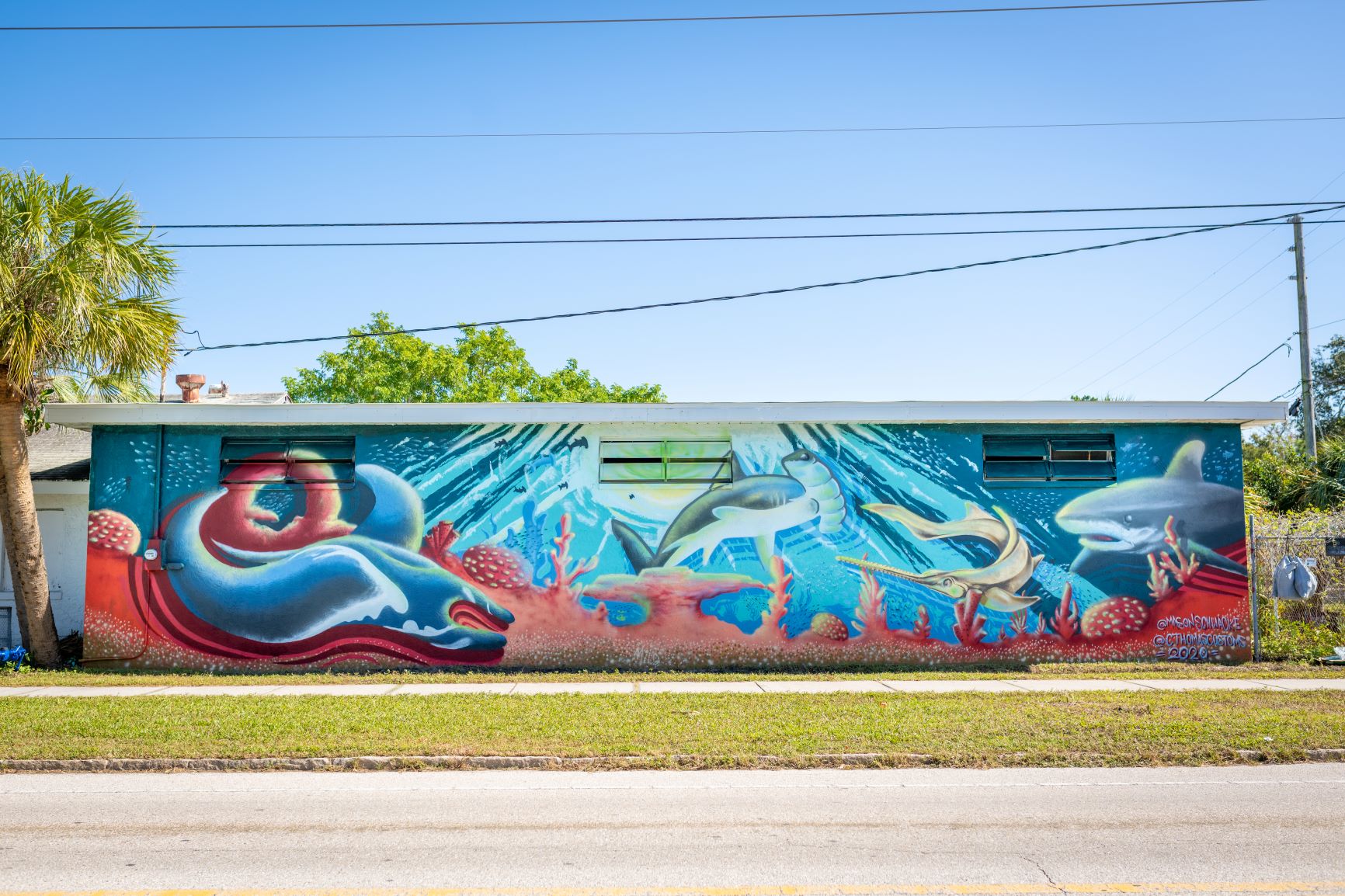Mason Schwacke
About Mason Schwacke
Based out of: St. Petersburg, Florida
Artist Statement
“Being that the National Oceanic & Atmospheric Administration (NOAA) was heavily involved in the design process, I truly wanted to bring the scalloped hammerhead, giant manta ray, smalltooth sawfish, and whitetip shark to life with a vibrant, almost exaggerated color palette. It truly is nauseating that we are in a chapter of humanity where most people neglect what is going on in our seas and with nature in general. I wanted to create the composition that addressed serious issues while showcasing an optimistic glow. The small things that we can easily do in our daily lives hold the potential to amount to something so much larger than ourselves. Even if this piece turns a few heads, people look up the PixelStix info, open a few closed minds, I think it is worth every ounce of effort. Our children and our children's children deserve to have a healthy planet to grow on. Without our oceans, they will have nothing.” – Mason SchwackeNOAA Fisheries is honored to sponsor the Protected Sharks and Rays mural for the 2020 St. Petersburg Arts Alliance’s SHINE Mural Festival which is being held in conjunction with the PangeaSeed Foundation’s Sea Walls Program. NOAA Fisheries’ Southeast Regional Office is, among other things, responsible for the conservation and recovery of threatened and endangered species as listed under the U.S. Endangered Species Act.
This mural aims to highlight four species of elasmobranchs (sharks and rays) that our agency protects. Each of these four species have skeletons composed of cartilage rather than bone and each face various threats from humans. Smalltooth sawfish populations have declined to the point the species is currently in danger of extinction. Giant manta ray, scalloped hammerhead sharks, and oceanic whitetip sharks are threatened species, meaning that if declines continue, they too will be in danger of extinction.
We very much appreciate local artist Mason Schwacke whose incredible design exceeded our vision. We look forward to sharing information on the plights of these 4 species with the public, in hopes of raising awareness and conservation. We are all stewards of the environment and this mural is an innovative form of outreach to inspire all to do their part.
https://www.fisheries.noaa.gov/
About Sharks and Rays
The smalltooth sawfish, giant manta ray, oceanic whitetip shark, scalloped hammerhead shark are found in the southeastern United States and are listed under the U.S. Endangered Species Act (ESA).
Sharks, skates, and rays are cartilaginous fish—known as elasmobranchs. Many elasmobranchs live in temperate and tropical oceans. They play an important role in ocean ecosystems. Sawfish and many sharks are top-level predators that help keep ecosystems in balance. Manta rays, whale sharks, and basking sharks are lower-level consumers that feed upon types of plankton. These planktivores are important indicators of ocean health, regulate plankton abundance and community structure, and promote nutrient cycling with their diving behavior.
Threats
ESA-listed elasmobranchs face many threats, including overharvest and incidental capture (bycatch) in fisheries, pollution, and habitat loss. They are particularly vulnerable to population declines because they grow slowly, mature late, and produce few young.
Commercial fishing is an imminent threat to protected elasmobranchs due to high demand for shark and ray products, such as fins, meat, oil, and gill plates. Additionally, millions of sharks and manta rays are incidentally captured and killed in global fisheries every year.
Ocean pollution affects all marine life. Ocean debris (e.g., ropes, netting, plastics) can entangle elasmobranchs, causing injury or death. Microplastic particles from degrading plastic waste are ingested and accumulate in the body, especially in filter feeding manta rays.
Habitat loss is a significant threat affecting sawfish populations throughout their range. Young smalltooth sawfish rely on shallow estuarine habitats fringed with vegetation, especially red mangroves, as nursery areas. Coastal development, especially in Florida, has changed or destroyed much of this habitat. This reduces sawfish nursery habitat and juvenile survival.
How You Can Help
● Buy sustainable seafood: The United States has some of the largest and most sustainable fisheries in the world—both wild-caught and farmed seafood. Learn more at FishWatch.gov.
● Reduce Ocean Trash: Pick up litter and dispose of it in trash containers, and participate in coastal cleanups.
● Respect: Always view these animals respectfully. Never chase, feed, or touch these animals in the wild. It can be harmful and dangerous to them, and you.
● Become a Citizen Scientist: If you see one of these rare species, please report your sighting to NOAA.
Meet the Species
Giant manta ray (Mobula/Manta birostris)
Fun Fact: Manta rays have huge brains (the biggest of any fish!) with developed areas for learning, individual recognition, and problem solving
Status: Threatened
Size: World’s largest ray, up to 29 feet wide (~9 m); at birth 6-8 ft (1-2 m)
Habitat: Open waters and productive coastal areas
Diet: zooplankton (tiny organisms that float along ocean currents)
Oceanic whitetip shark (Carcharhinus longimanus)
Fun Fact: The tips of their fins are rounded which is atypical for sharks
Status: Threatened
Size: Up to 11.25 ft (~3 m)
Habitat: Offshore in the open ocean, on the outer continental shelf, or around oceanic islands in water depths greater than 600 ft - preference for surface waters
Diet: Bony fishes, cephalopods (squids, octopi, cuttlefish), sometimes sea birds, other sharks and rays, and marine mammals
Smalltooth Sawfish (Pristis pectinata)
Fun Fact: The 22-29 teeth on each side of a sawfish’s snout (rostrum) are not true teeth, they are modified scales that are used to attack prey
Status: Endangered
Size: Up to 16 ft (~5 m)
Habitat: Estuaries and nearshore coastal waters
Diet: Primarily fish
Scalloped Hammerhead - Central and Southwest Atlantic population (Sphyrna lewini)
Fun Fact: Their hammers are called cephalofoils and they contain sensory receptors to help detect prey
Status: Threatened
Size: Up to 11 ft (~3.3 m)
Habitat: Intertidal coastal waters to open ocean depths of 1,600 ft
Diet: Fish, cephalopods, crustaceans (shrimp and crabs), and rays
About the Mural
“Being that the National Oceanic & Atmospheric Administration (NOAA) was heavily involved in the design process, I truly wanted to bring the scalloped hammerhead, giant manta ray, smalltooth sawfish, and whitetip shark to life with a vibrant, almost exaggerated color palette. It truly is nauseating that we are in a chapter of humanity where most people neglect what is going on in our seas and with nature in general. I wanted to create the composition that addressed serious issues while showcasing an optimistic glow. The small things that we can easily do in our daily lives hold the potential to amount to something so much larger than ourselves. Even if this piece turns a few heads, people look up the PixelStix info, open a few closed minds, I think it is worth every ounce of effort. Our children and our children's children deserve to have a healthy planet to grow on. Without our oceans, they will have nothing.” – Mason SchwackeNOAA Fisheries is honored to sponsor the Protected Sharks and Rays mural for the 2020 St. Petersburg Arts Alliance’s SHINE Mural Festival which is being held in conjunction with the PangeaSeed Foundation’s Sea Walls Program. NOAA Fisheries’ Southeast Regional Office is, among other things, responsible for the conservation and recovery of threatened and endangered species as listed under the U.S. Endangered Species Act.
This mural aims to highlight four species of elasmobranchs (sharks and rays) that our agency protects. Each of these four species have skeletons composed of cartilage rather than bone and each face various threats from humans. Smalltooth sawfish populations have declined to the point the species is currently in danger of extinction. Giant manta ray, scalloped hammerhead sharks, and oceanic whitetip sharks are threatened species, meaning that if declines continue, they too will be in danger of extinction.
We very much appreciate local artist Mason Schwacke whose incredible design exceeded our vision. We look forward to sharing information on the plights of these 4 species with the public, in hopes of raising awareness and conservation. We are all stewards of the environment and this mural is an innovative form of outreach to inspire all to do their part.

https://www.fisheries.noaa.gov/

